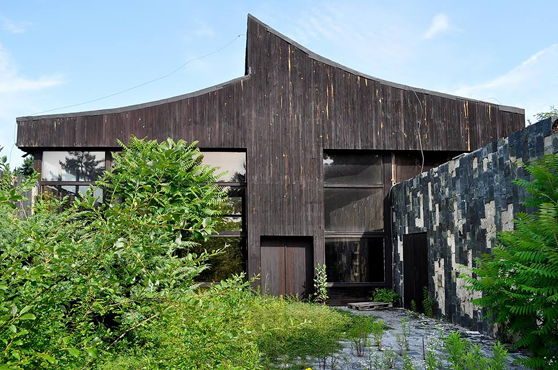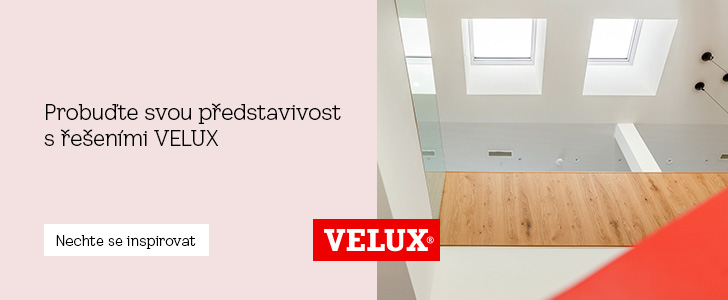
Commented Walks: Architecture Day – Sorrow in Brno
 |
| Ivan Ruller, Funeral Hall in Brno-Židenice, 1977-1983 |
On Sunday, October 5th at 3 PM, as part of the ARCHITECTURE DAY, there will be two guided walks organized by the 4AM Forum for Architecture and Media:
GRIEF IN BRNO -> October 5th at 3 PM, Cemetery Brno-Židenice, entrance from Komprdova Street
Meeting and discussion about the circumstances of the creation and the current state of the hall with its author Ivan Ruller and the authors of the monographic publication “Funeral Hall in Brno-Židenice”
The Funeral Hall in Brno-Židenice, built from 1977-83, is among the significant realizations of architect Ivan Ruller in Brno. The modernist building, influenced by Scandinavian architecture, is embedded in the pleasant environment of the Židenice forest park. Architect Ruller successfully collaborated with more than fifteen visual artists to create a work of extraordinary architectural and artistic quality in Židenice, which, however, has not served its purpose for more than seven years and is deteriorating. In 2011, it was decided to demolish it, against which both its author and many citizens of Židenice are fighting.
After the ceremonial opening, the funeral hall served its purpose without repairs and regular maintenance until 1996. At that time, it already showed certain signs of wear and several structural defects, based on which the then-new director of the Cemetery Administration of the City of Brno commissioned an expert report on the structural condition of the building. The report found damaged surfaces and an emergency condition of the outer shell – the most prominent issues were the peeling of the slate cladding and degradation of wooden surfaces. A general repair was recommended to prevent devaluation of the building's structural integrity. A proposal for the necessary repairs was subsequently submitted to the owner, the representatives of the City of Brno, who, however, rejected the allocation of financial resources. As a result, the condition of the funeral hall began to deteriorate structurally, and naturally, the costs for its potential reconstruction began to escalate. This situation lasted for ten years, during which another assessment of the building took place. The second report highlighted the critical state of the building and recommended prompt action. As a result, the hall was closed to the public in 2007. The abandoned building was left to its fate, as were most of the artworks and furnishings in the interior. At the initiative of the residents of Židenice, representatives of the municipal district repeatedly negotiated with the Brno city hall about the reconstruction. Architect Ivan Ruller himself and the professional public began to call for a solution to the future of the ceremonial hall, as not only its outer shell was gradually degrading, but its artistic components were also being destroyed or stolen. A decision regarding the future of the hall was made in September 2011, when representatives of the Brno City Council chose the third option from three variants – preservation – demolition – demolition and the construction of a new hall. The reconstruction of the existing building was not considered at all. Subsequently, an architectural study for a new ceremonial hall was ordered without a public tender or consultation with the building's author.
Since then, however, the situation has not evolved further, apart from the continuing deterioration of the abandoned structure. The city has not yet allocated financial resources for the demolition, prompting public initiatives to potentially overturn its decision. Unfortunately, an attempt to declare the Židenice funeral hall a cultural monument was unsuccessful, due to considering the state of neglect that the hall has suffered for many years, but also due to the generally low willingness of the Ministry of Culture to declare post-war architectural production as monuments.
In collaboration with the Faculty of Architecture and the Faculty of Fine Arts at the Brno University of Technology, a monographic publication "Funeral Hall in Brno-Židenice" was published just before the end of last year, aiming to reopen the issue of the reconstruction of the funeral hall and thus provide necessary arguments for further discussion. Contributions from architecture theorists as well as words from its author, architect Ivan Ruller, reflect not only the artistic and historical assessment of the building and its artworks but also place the funeral hall in the context of contemporary architectural creation, while detailing the entire development of the case of impunity in the gradual degradation of this significant architectural realization by representatives of the City of Brno.
"The Funeral Hall designed by architect Ivan Ruller in Brno-Židenice has been condemned to demolition by its owner, the statutory city of Brno, after years of deterioration. No one is responsible for the shameful neglect of care for this architecturally valuable public asset."
Šárka Svobodová, architecture theorist
Following the meeting in front of the funeral hall in Brno-Židenice:
REVIVE AND UNCOMMON -> Sunday, October 5th at 4:30 PM, meeting at Juliánovské Square
A guided walk through the artworks of Zdeněk Macháček, Jiří Marek, and František Šenko located in the housing estate in Brno-Juliánov will end at Bílá Hora near the monument marking the founding of the workers' movement by author Ladislav Martínkov. The tour will be conducted by the authors of the eponymous publication, Jana Kořínková and Markéta Žáčková.
The goal is to raise public awareness about the architecture and visual arts of the second half of the 20th century. In the effort to suppress memories of the socialist past, the objective values of that era's architectural and visual production are often ignored.
Both walks are part of the long-term project of the 4AM Forum for Architecture and Media – CONSONANCE OF MODERNITY, which seeks to explore the broader context of the modernist movement developing in architecture since the interwar period through research, expert lectures, discussions, exhibition projects, and workshops. While the modernist movement is recognized in the theory of architecture as a significant epoch in the history of art and architecture, in practice, many modernist realizations, or buildings with evident echoes of this movement, are perceived reservedly or even rejected by both the professional and lay public. In our context, this primarily concerns architecture created under the communist regime, which is condemned for ideological reasons due to its time of origin. Little space is given for professional research, artistic-historical evaluation, and public discussion.
For more information HERE and HERE
The English translation is powered by AI tool. Switch to Czech to view the original text source.
Related articles
0
20.09.2023 | The Brno-Židenice district has commenced the renovation of the mourning hall designed by architect Ruller
3
28.06.2021 | Behind the aerial trees in Brno lies a gem, the mourning hall of architect Ruller
0
16.10.2018 | Brno wants to renovate the ceremonial hall designed by the late architect Ruller
0
16.03.2015 | The Brno-Židenice Town Hall wants to renovate the mourning hall
0
10.10.2011 | Representatives of Brno-Židenice want to protect the mourning hall from demolition











